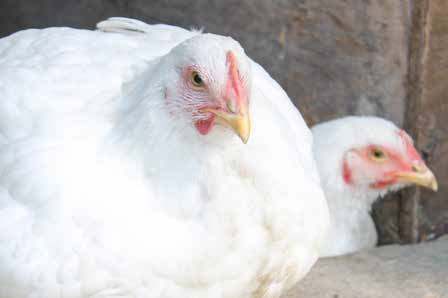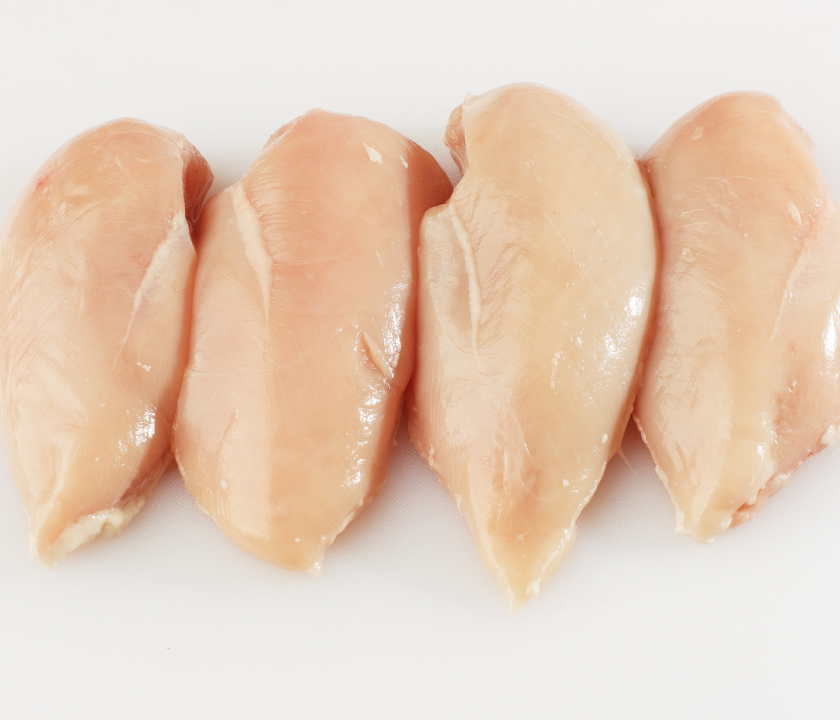
- The onset of this muscle metabolic disorder has been described, but the specific etiologies or factors that trigger the problem are still unclear.
- We will review some recent research findings indicating that myopathies are related to particular changes in metabolic pathways.
However, linking the metabolic disorders with nutritional modifications to mitigate WB incidence has not been very successful. These facts give an idea of the complexity to solve the WB issue and indicate that better comprehension of all findings is vital to design strategies to mitigate this myopathy.
This article attempts to summarize the new conclusions and how they are related to previous results and practical observations.
THE MUSCLE TISSUE AND MEAT IMPLICATIONS
- There is fibrosis, re-assembling and increase in extracellular matrix proteins, especially collagen type I and III, proteoglycan, and glycosaminoglycans.
- The muscular fibers of affected fillets have variable sizes.
- Many muscle fibers are too large compared to normal muscle and have permanent contraction or necrosis.
- There is interstitial inflammation and frequently mononuclear cell infiltration, especially near small veins.
- Inflammation processes near the muscle’s vascular system reduce oxygenation, increase oxidative stress, and muscle cell death.
- The lesions may be observed in some individuals in the first week of age.
- Some reports have shown similar histological lesions at hatch.
- The increased fat infiltration, fibrosis, and collagen changes cause the white strips, paler appearance, and more rigid texture typical of the WB.
- The hardness is more evident in the breast muscle’s cranial region, but it occasionally extends throughout the muscle.
- A good description of the severity of the pathology with all histological findings is presented in Figure 1.
Figure 1. Broiler chicken Pectoralis major showing the WB myopathy scores, 1 – 4.
A gradual progression in the diseased tissue can be observed in the images. Lesions consist of muscle fiber swelling, necrosis, degeneration, regeneration, and lymphocytic vasculitis. Diseased muscle fibers become separated and connective tissue develops around the fibers and between muscle bundles. Source: US Poultry and Egg Association Research Project 691. Barnes et al., 2017
- In fact, organoleptic testing panels have confirmed several differences with non-affected fillets
Additionally, protein and fat ratios are altered in WB muscle and, consequently, meat contains 1.2 to 1.3% more fat.
- Also, meat pH and water holding capacity (WHC) is reduced. The lower pH is responsible for approximately one-third of the reduction of WHC. The higher contraction degree of WB muscle fibers during rigor mortis could reduce the space for water storage.
- With lower WHC, the meat has a lower ability to absorb marinades and flavorings.
Consequently, depending on storage time, processing, cooking methods, and consumer taste, the affected meat’s acceptability could be significantly reduced.
METABOLIC AND CELLULAR ORIGINS OF MYOPATHIES
The modifications using fat in the muscle increases the production of free radicals that damage the muscle cells.
- The injured muscle signals an immunological response that ends up causing phlebitis or inflammation of the vein’s walls.
- Interestingly, that research group has also found that broilers affected with WB present pulmonary phlebitis, demonstrating that metabolic or immunological changes maybe not be limited only to the breast muscle.
Similarly, a Finnish group from the University of Helsinki linked WB with the more flawed broilers’ gait.
Hypoxia and oxidative stress have always been detected in muscles affected by WB, and now it has a link with the altered lipid metabolism
- The reactive oxygen species or free radicals are in elevated concentrations in these myopathies.
- The cellular damage caused by these free radicals include changes in sodium/potassium-ATPase channels.
- These ion changes have been confirmed in meat and cause muscle alterations of ion balance that affect calcium metabolism, increasing its intracellular concentrations.
- The modifications in free calcium and ions explain the excessive muscle contraction during rigor mortis.
- Together with free radicals, it could be causing mitochondrial dysfunction, abnormal oxidative muscle metabolism, and oxidative instability in WB meat reported recently.
ROLE OF GENETIC SELECTION AND ENVIRONMENT
In the past years, several studies conducted by Aviagen have demonstrated that breast muscle myopathies’ heritability ranges from 0.04 to 0.25, which is very low and variable. The genetic correlation of myopathies with body weight and breast meat yield ranges between -0.06 to 0.41
Keep up to date with our newsletters
Receive the magazine for free in digital version
REGISTRATION
ACCESS
YOUR ACCOUNT
LOGIN
Lost your password?

